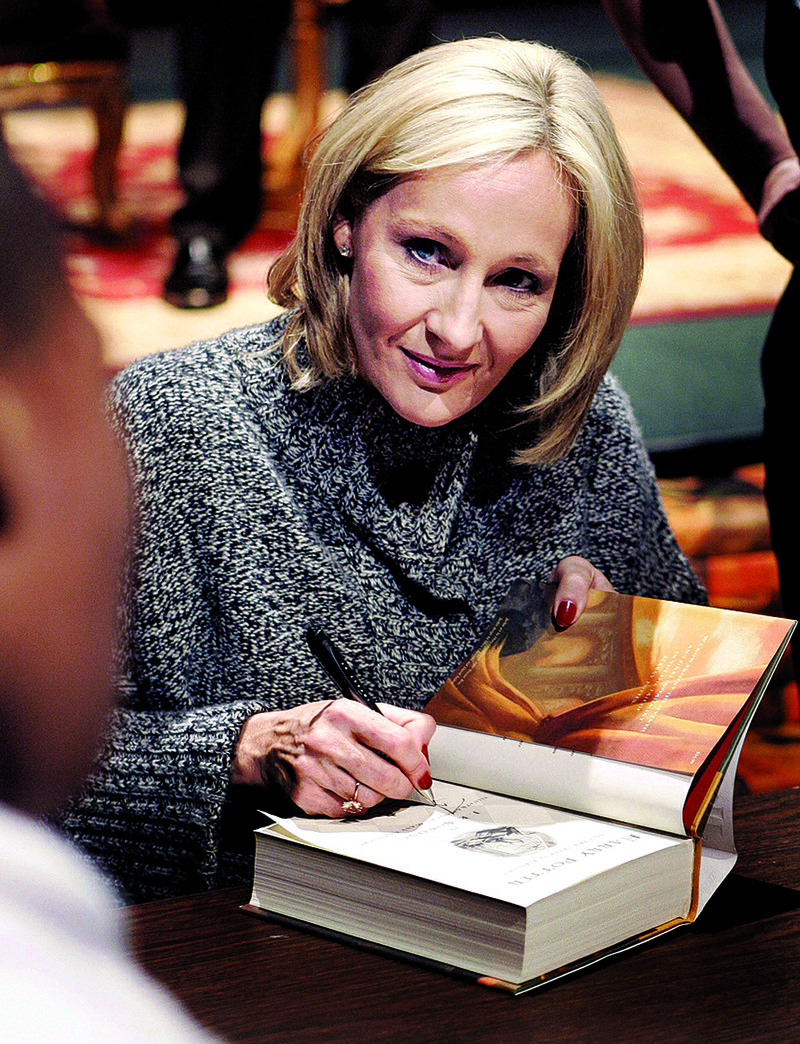NEW YORK — When the Harry Potter books finally went on sale in electronic form last week, it was as if Harry himself had cast the “Alohomora” spell on them - the one that unlocks doors.
In a break with industry practices, the books aren’t locked down by encryption, which means consumers can move them between devices and read them anywhere they like.
If “Pottermore,” J.K. Rowling’s new Web store, proves a success, it could provide a model for other authors and publishers, and undermine the clout of Amazon.com Inc., which dominates e-book sales.
The seven Harry Potter books, with young wizards led by Harry battling an evil force, have generated total sales in the hundreds of millions of copies worldwide.
“I think it’s a very large crack in a dam that’s going to collapse in the next nine to 12 months,” said Matteo Berlucchi, chief executive officer of an independent British-based online bookstore, aNobii.
Electronic books from major publishers are sold in encrypted form. The text of a book is scrambled so that only authorized devices and software can read it. For instance, a book bought from Amazon can be read only on the company’s Kindle electronic readers and on its Kindle applications for smart phones, tablets and PCs. It can’t be read on Barnes & Noble’s Nook e-readers.
Conversely, a book for the Nook can’t be read on a Kindle. A book purchased from Apple Inc. can only be read on iPhones, iPod touches and iPads.
Publishers insist on encryption in the form of “Digital Rights Management” because they believe it stops piracy. It also helps e-book retailers like Amazon defend their business models, keeping non-Amazon books off Kindle e-readers.
But when fans of Rowling’s tales buy a book from Pottermore, they can download it in a variety of formats, including one that is not protected by Digital Rights Management. They can be read by a wide variety of applications and devices.
These books can be purchased once and then passed around to friends or shared with children. Wider sharing is dissuaded by visible and invisible “watermarks” inserted by Pottermore before the download, which identify the buyer.
Charles Redmayne, chief executive officer of Pottermore, said Harry Potter books are probably the most pirated in the world already, even though - or maybe because - there have been no legal electronic versions until now. Fans have scanned or even retyped the printed books to make them available in electronic form.
“We believe that people should have the right, once they’ve bought the book, to read it on any device that they chose to,” Redmayne said.
Of course, there’s another reason Pottermore is going Digital Rights Management free. It wants to “own” the relationship with the customers - the Potter fans - rather than have them go to other retailers. And the only way to get onto all reading devices without dealing with the other retailers is to sell books without Digital Rights Management.
“It’s a very valuable thing to us to own that customer relationship. It gives us a tremendous opportunity to create new products that we can sell to those consumers around the Harry Potter brand,” Redmayne said.
Publishing consultant Michael Shatzkin thinks other authors are unlikely to copy Rowling and set up their own stores - because Rowling is “The Beatles” of the literary world and an industry unto herself. But he believes publishers who can aggregate the works of many authors on their sites are going to figure out that they can bypass Amazon as long as they’re willing to give up Digital Rights Management.
“If you don’t have DRM, it opens up strategies that aren’t available to you if you insist on DRM,” Shatzkin said. “The question is: Is the fear of piracy greater than the fear of Amazon?”
Amazon is thought to account for about 60 percent of the e-books sold in the U.S. Barnes & Noble Inc. is the second-largest seller with around 25 percent.
Berlucchi, the aNobii CEO, likens the state of the e-book industry to the one in the music industry before 2008. Music publishers insisted on protecting legally sold songs with Digital Rights Management, but all they did was allow Apple to corner the market, he said, since tracks bought from other stores wouldn’t work on iPods.
“It took five years from the launch of the iPod for the music industry to realize that they weren’t achieving anything with DRM,” Berlucchi said.
Early in 2008, music publishers allowed Amazon to launch a music store with Digital Rights Management free songs. Apple’s iTunes store went completely Digital Rights Management-free the next year.
Andi Sporkin, a spokesman for the Association of American Publishers, said Digital Rights Management “has value,” enabling things like library lending of e-books (without Digital Rights Management, there’s no way to “return” an e-book).
Going the route of the music industry and going Digital Rights Management-free hasn’t really been discussed in the publishing industry yet, she said.
In the case of Pottermore, Amazon is collaborating, sending shoppers from its site to Pottermore if they search for Harry Potter books. Shatzkin believes this is because Amazon, faced with getting nothing from sales of Harry Potter books, likely decided it should be in on the game to at least get referral fees.
Amazon didn’t comment on its reasons for sending shoppers to Pottermore, nor would it confirm whether it gets referral fees.
Information for this article was contributed by Hillel Italie of The Associated Press.
Business, Pages 19 on 04/02/2012
